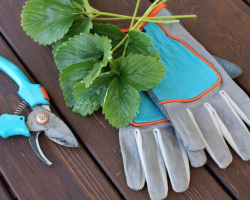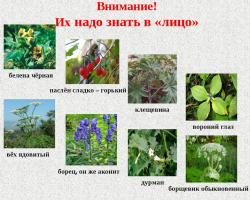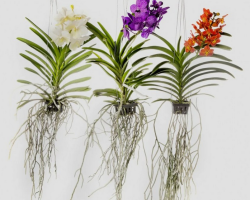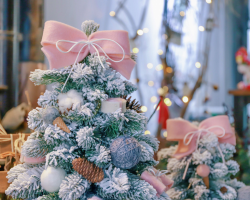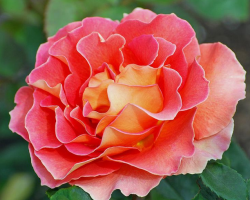Not everyone understands why you can do manual pollination of cultivated plants. The answer is simple: from this seemingly simple procedure, productivity increases significantly.
Content
- Why is manual pollination of plants important?
- How to manually pollinate tomatoes, eggplant, pepper?
- How to manually pollinate a pumpkin, cucumbers, melon, zucchini, watermelons right?
- Video: proper pollination of cucumbers
- How to pollinate corn manually?
- Video: pollination of indoor plants manually
Even novice-veins and flower growers will be able to quickly acquire pollination skills, and eventually even try to get some new hybrid.
Why is manual pollination of plants important?
- Everyone knows that without fertilized by pollen, the eggs are not formed on the plant, which means that the fetus will not be tied. Thanks to bees, butterflies, flies, beetles and other insects, mostly pollination occurs, but due to pesticides and other intensive agronomic methods, their population has much reduced.

- Often, gardeners complain about the poor yield of vegetable crops, despite the fact that the plants grew well and threw color. And this is to blame for the only insufficient pollination of plants. How to help such trouble? Only manual pollination can give a guarantee of fruiting.
Professionals from crop production indicate 3 good reasons in favor of manual pollination:
- To increase the chances of successful pollination. This is all the more should be done in areas where practically bees or other pollinators do not fly. For many pumpkv manufacturers, this technology has long been put on stream: with manual pollination of female flowers, fruits are usually well tied. Corn is also often subjected to such an operation in which you can hope to get complete cobs in the fall. There is no doubt that in the greenhouses, rags are engaged in manual pollination of plants, since insects are unlikely to fly there.
- The removal of new varieties, or hybridization. Cross -pollinating plants of different species, you can achieve new varieties. As a result, flowers or vegetables of new colors, shapes appear, or they become more resistant to diseases, etc.
- The purity of varieties remains. The plant will not be able to put it on its own, which means that its seeds are suitable for sowing in the next season.
How to manually pollinate tomatoes, eggplant, pepper?
- For garden crops with hermafrodite flowers, i.e. Self -pollinatingshake them slightly. Pollination assistants are wind or insects. But protected places (if the plant grows in a greenhouse, greenhouse, or on a windowsill) do not allow plants to be experienced by themselves, therefore, a person should act as a pollinator. It is best to shake the plants in the middle of the day, at low humidity and high temperature, or in the early morning, when the dew is dry.
- Even in the role of the pollinator, can be brush, cotton wool or feather - All this should be dry and clean. One of these tools must be carefully inserted into the central part of the flower and slightly pumped it from side to side.
- Some gardeners use another original way of manual pollination: they adapted for this electric toothbrush. The vibrations that the brush produces are akin to the vibrations of bee wings. To achieve the pollinating effect, the electrical brush is simply applied to the stalk, and then turns on.
How to manually pollinate a pumpkin, cucumbers, melon, zucchini, watermelons right?
- If you are engaged in the cultivation of one -day plants - pumpkv, cucumbers, zucchini, watermelons and melons, then, with manual cross -pollination, you will have to use other, more complex, technologies. For fertilization of female floral stigmas, you need them transfer pollen from men's floral anthers.
- Usually pumpkin are first covered with men's flowers, and female - a little later. As a rule, a break between their flowering is from a week to two. Female flowers differ from men's outgrowth in the form of a small fetus.
- For manual pollination It will be necessary to break the petals covering the men's flower so that its stamens are exposed. Next, a brush or cotton wool is taken, with which pollen is transferred to pestle of female flowers. After several such touches, you need to change the brush. According to female flowers, you can also lightly smear male, already devoid of petals.

- By the way, mature pollen is perfectly stored in the refrigerator for several days. If women's flowers do not appear, then male can be cut and put, like a bouquet, in water, and then place the container in the refrigerator. And when the tops are covered with female flowers, you can use this pollen.
- It may happen that even manual pollination will not lead to the formation of fruits. In this case, you should pay attention to the impact of other factors. It is possible that your plants are lacking moisture, or sunlight does not reach them, or nutrients do not come in the right amounts, etc.

Video: proper pollination of cucumbers
How to pollinate corn manually?
- One corn plant is covered with both female and male flowers. The men's flower is paniclewho, as it were, crowns the stem. After the maturation of pollen, she falls down down, while pollinating the stigmas of female flowers, which are located in the bosom of the leaflets.
- For effective manual pollination of corn, you should wait for this particular moment. Yellow pollen begins its fall a few days before women's stigmas will already be ready for fertilization, and such a “pollen” will last another week. Only from the cobs will seem to be stigma, you can begin to pollinate corn.
- The best time for manual pollination is from 9 to 11 hours, when the morning dew has already dried up - it is then that pollen is most intensively crumbling. Do not perform manipulations for manual pollination during cool, cloudy or rainy weather, since then the process usually slows down.

- To make manipulations by pollination, you need to cut a few fleece, and, like a brush, smear them through the stigmas of female flowers.
Useful articles on the site:
- Why dry the edges of the leaves in indoor plants
- Types of manure and its benefit for different plants
- Why do plants need mineral fertilizers
- Flower plants with large colors
- How to make tinctures for spraying plants from weeds


